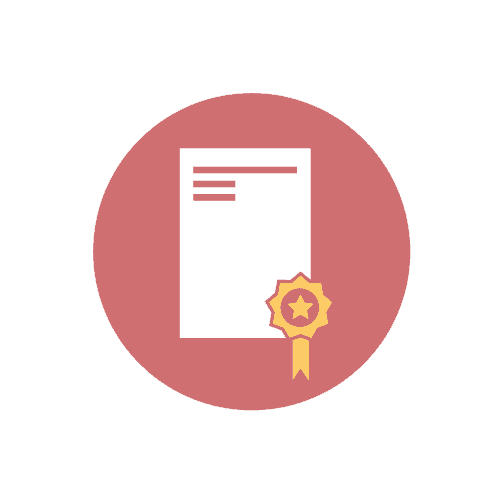A life that revolves around a 9-to-5 workday can be unfulfilling and even frustrating. A post-retirement life can also easily become monotonous and dull. Learning to play a musical instrument can be a very effective means of relieving the stresses of daily life, in addition to expanding one’s set of skills and abilities, enriching one’s life.
*Trial lesson is chargeable
After Work Lessons
Learning music as an adult can be a daunting task, especially when you hold a full-time job. Your timing could be erratic and subject to your work schedule at different times of the year. However, at Eight Tones Music School, we understand and are willing to cater to your scheduling needs. Our music lessons are available on weekdays till night and weekends till evening, making us the only Chinese music school in Singapore for adults that cater for music lessons on weekday evenings. Our music school is able to accommodate to your schedule changes so long as you provide us with ample notice.
Featured Collaborations
Our music school’s flexible schedule allows you to have your music classes at the most convenient timings so as not to compromise your working arrangements. Coming for our music classes, you do not have to bring an instrument as instruments such as erhu, guzheng, pipa, zhongruan, guqin, amongst many others are provided for at our music school.
Lessons for Retirees and Senior Citizens
With more control over your time after retirement, and so much more free time, why not consider picking up an instrument? Learning to play a musical instrument is one of the best post-retirement hobbies, as it can sharpen one’s mind and slow down the degeneration of one’s motor skills and muscle groups involved. Moreover, it allows you to enrich your mental and spiritual life with music. You can also learn how to perform your favourite oldie on a Chinese instrument!
Unsure of Which Chinese Instrument To Learn?
Do you know that Chinese Instruments are categorized to 4 main sections? 吹,拉,弹, 打, which translates respectively to – Woodwinds, Bowed Strings, Plucked Strings and Percussion.
Find out more about the different Chinese instruments in our weekly 60 minutes workshop, where you will be exposed to various Chinese instruments such as the Erhu, Guzheng, Dizi, Ruan and Pipa.
Purchase your tickets today by clicking on the button below.
Our Services
Being a one stop shop, you can purchase your instrument of choice, books, and accessories here. If you are up for a challenge, register for an examination too. Furthermore, for a nominal fee, you can rent a studio at our music school to practice after/before your music classes.
*Trial lesson is chargeable
Our Expertise
With more than 200 adult music classes conducted weekly, rest assured that our teachers are well equipped to teach adults. Our teachers will keep you comfortable by teaching at your preferred pace, according to your learning needs and commitment level.
At our music school we teach both pop and classical Chinese adult music lessons. Pop music lessons include music by Jay Chou, Ed Sheeran, and many other artists. Classical music lessons offerings include traditional Chinese music such as Sai Ma, Chun Jiang Hua Yue Ye and other classic tunes and folk songs.
Instruments Available / Lesson formats
Benefits of Learning Chinese Instruments












Which Instrument Should You Choose?
A popular instrument amongst many adults as it is relatively lightweight and portable. When you are proficient on the erhu, you will discover that it is an extremely versatile Chinese instrument with a rich tone emulating that of the human voice . The Erhu also serves as the foundation for other Chinese instruments such as the Gaohu, Zhonghu, Banhu, and other instruments in the “Hu” family. However, the learning curve can be steep as compared to other instruments such as the guzheng, as when learning the erhu, you would need to spend more time on intonation and bowing techniques before being able to play tunes. If you have the patience and perseverance to put into establishing some groundwork, you will be greatly rewarded by the erhu’s charming tone.
Click here to learn more about Erhu lessons
An iconic Chinese instrument, its shimmering celestial tones are familiar to the ears of many. The guzheng is one of the easiest Chinese instruments to pick up. Just in the first lesson you would be play a simple tune. One of the drawbacks is that the guzheng compared to other instruments take up quite a bit of room; it would easily take up two seats in a family car with its total length of 165cm, and would take up almost as much space as a piano when in your home. If you want an instrument that is easy to learn, and if you have the space for it, the guzheng would be a great choice for you.
Click here to learn more about Guzheng lessons
The guqin is a plucked seven-string Chinese musical instrument of the zither family. It has been played since ancient times, and has traditionally been favoured by scholars and literati as an instrument of great subtlety and refinement, as well as being associated with the ancient Chinese philosopher Confucius. The guqin is not to be confused with the guzheng which has 21 strings, and is much larger. Guqin music is typically slower and quieter, and might not suit the tastes of learners who prefer to play more upbeat music.
Click here to learn more about Guqin lessons
You will always know when your neighbour is learning the Dizi. It is loud and has a distinct tone. The Dizi is one of the most prominent Chinese wind Instruments. Made of bamboo, it is also one of the lightest and most portable Chinese instruments. Be it playing at home or overseas, the dizi’s small size and light weight makes it great for carrying around. The dizi typically plays beautiful and lyrical melodies, as it is commonly used as a solo or lead instrument within an ensemble or Chinese orchestra. It also serves as the foundation for other chinese wind instrument such as Xiao, Xun, Bawu, Hulusi, and more.
Click here to learn more about dizi lessons
The Pipa is the instrument with probably the most playing techniques, and its amphibious character and myriad of tones make it one of the most interesting Chinese musical instruments. It can mimic many instruments from the Indian sitar all the way to the Japanese shamisen. Leave your friends and family dumbstruck when you show the various techniques and tones of the pipa. One of the drawbacks is that it can be rather heavy, with some instruments weight north of four kilograms. If you can get past its weight, the pipa would a great instrument to jam with your friends or for your own enjoyment with a cup of tea.
Click here to learn more about Pipa lessons
Both the Ruan and Liuqin have similar playing techniques, though they sound quite different from each other. They are easy to pick up and are portable, just like a guitar. The one drawback is the lack of repertoire for these instruments, making it a little more difficult to find scores and music for it. However, at Eight Tones Music, our teachers will go the extra mile to find you your scores.
Click here to learn more about Zhongruan lessons
A descendent of the Indo-European hammered dulcimer, the yangqin is an instrument with many strings stretched out over a large wooden resonator box and a series of bridges, played with two lightweight bamboo beaters striking the strings. The range of notes that the yangqin can play is one of the widest amongst Chinese instruments, ranging slightly over four octaves from the bass register to the high treble register, making it a versatile instrument able to play both melody as well as accompaniment. Moreover, the tuning of the yangqin is chromatic, enabling it to move freely between different keys, enhancing its versatility in playing a wide variety of music across different genres from traditional Chinese pieces to jazz standards.
Click here to learn more about Yangqin lessons
A popular instrument amongst many adults as it is relatively lightweight and portable. When you are proficient on the erhu, you will discover that it is an extremely versatile Chinese instrument with a rich tone emulating that of the human voice . The Erhu also serves as the foundation for other Chinese instruments such as the Gaohu, Zhonghu, Banhu, and other instruments in the “Hu” family. However, the learning curve can be steep as compared to other instruments such as the guzheng, as when learning the erhu, you would need to spend more time on intonation and bowing techniques before being able to play tunes. If you have the patience and perseverance to put into establishing some groundwork, you will be greatly rewarded by the erhu’s charming tone.
Click here to learn more about Erhu lessons
An iconic Chinese instrument, its shimmering celestial tones are familiar to the ears of many. The guzheng is one of the easiest Chinese instruments to pick up. Just in the first lesson you would be play a simple tune. One of the drawbacks is that the guzheng compared to other instruments take up quite a bit of room; it would easily take up two seats in a family car with its total length of 165cm, and would take up almost as much space as a piano when in your home. If you want an instrument that is easy to learn, and if you have the space for it, the guzheng would be a great choice for you.
Click here to learn more about Guzheng lessons
The guqin is a plucked seven-string Chinese musical instrument of the zither family. It has been played since ancient times, and has traditionally been favoured by scholars and literati as an instrument of great subtlety and refinement, as well as being associated with the ancient Chinese philosopher Confucius. The guqin is not to be confused with the guzheng which has 21 strings, and is much larger. Guqin music is typically slower and quieter, and might not suit the tastes of learners who prefer to play more upbeat music.
Click here to learn more about Guqin lessons
You will always know when your neighbour is learning the Dizi. It is loud and has a distinct tone. The Dizi is one of the most prominent Chinese wind Instruments. Made of bamboo, it is also one of the lightest and most portable Chinese instruments. Be it playing at home or overseas, the dizi’s small size and light weight makes it great for carrying around. The dizi typically plays beautiful and lyrical melodies, as it is commonly used as a solo or lead instrument within an ensemble or Chinese orchestra. It also serves as the foundation for other chinese wind instrument such as Xiao, Xun, Bawu, Hulusi, and more.
Click here to learn more about dizi lessons
The Pipa is the instrument with probably the most playing techniques, and its amphibious character and myriad of tones make it one of the most interesting Chinese musical instruments. It can mimic many instruments from the Indian sitar all the way to the Japanese shamisen. Leave your friends and family dumbstruck when you show the various techniques and tones of the pipa. One of the drawbacks is that it can be rather heavy, with some instruments weight north of four kilograms. If you can get past its weight, the pipa would a great instrument to jam with your friends or for your own enjoyment with a cup of tea.
Click here to learn more about Pipa lessons
Both the Zhongruan and Liuqin have similar playing techniques, though they sound quite different from each other. They are easy to pick up and are portable, just like a guitar. The one drawback is the lack of repertoire for these instruments, making it a little more difficult to find scores and music for it. However, at Eight Tones Music, our teachers will go the extra mile to find you your scores.
Click here to learn more about Zhongruan and Liuqin lessons
On Your First Lesson
Our teacher will discuss your goals and expectations with you. Design a suitable curriculum, be it for leisure, foundation building or examinations.
If you do not have an instrument and would like to purchase from us, our teacher will help you to pick an instrument which is most suited to you.
Our Chinese instrument teacher will discuss your goals and expectations with you. If you would like to expand your repertoire, build on your foundation amongst many others, our teachers will design a suitable course curriculum for you.
Syllabus
The NAFA (CCOM) Instrumental Guzheng Exam (click here for the NTU – TENG examination structure)
Grade 1 – 小鸟朝凤, 关山月, 十杯酒 (轻六调), 二十五板, 小开手, 上楼, 千声佛
Grade 2 – 画眉跳架 (重六调) 二十四板, 西江月 (又名《一点红》) (轻六调) 二十八板, 凤翔歌, 西厢词, 蝶恋花, 三十三板
Grade 3 – 汉宫秋月, 绣金匾, 渔舟唱晚, 灯月交辉(又名《刺绣鞋》), 柳青娘 (轻六调)三十板, 河南八板 (又名《天下大同》)
Grade 4 – 浪淘沙, 狮子戏球 (重六调) 四十板, 浏阳河, 纺织忙, 高山流水
Grade 5 – 洞庭新歌, 云庆, 山丹丹开花红艳艳, 瑶族舞曲, 高山流水
Grade 6 – 丰收锣鼓, 苏武思乡, 春到拉萨, 香山射鼓, 庆丰年
Grade 7 – 高山流水, 秦桑曲, 蕉窗夜雨, 战台风
Grade 8 – 雪山春晓, 陈杏元和番, 寒鸦戏水 (重六调) 六十八板, 东海渔歌
Grade 9 – 草原英雄小姐妹, 将军令, 林冲夜奔, 幸福渠水到俺村
Diploma – 春到湘江, 情景三章, 幻想曲, 长安八景
Why Choose Us?













Instrument and Lessons Bundle
Get your bundle today!
Click Here
Lessons and Instrument Bundle
Get your bundle today!
Click Here
Instrument and Lessons Bundle
Get your bundle today!
Click HereFrequently Asked Questions
For more information, click here.
You can learn the a Chinese Musical Instrument even without a background in music.
No, Chinese Instrument can be easy to master. Have a chat with our staff to learn more. Contact Us now
It is flexible and we can accommodate to your schedule. Most students take weekly lessons with us.
We do both individual and group lessons. However, we recommend individual lessons, 1 student to 1 teacher.
Group lessons are taught; however, groups have to be formed on your own. Kindly note that group lessons are limited to a maximum of 4 students.
More information on our teachers can be found by clicking here
Our teachers are able to speak both English and Mandarin well.
Yes, however, if you wish to switch teachers, this can be arranged.
Sure, our teachers are able to teach English and Chinese pop and jazz.
You can purchase a Chinese instrument at our music school. Your teacher will be able to advise you to purchase a suitable one.
Trial Chinese Instrumental lessons are offered one time per instrument and to be paid after lesson. If you are unavailable to come for trial lesson, you have to inform the school within 24 hours. Failure to do so will result in a prepaid trial lesson for your next booking.
Mode of payment we accepted are cash, NETS, cheque, PayNow and bank transfer.


